Source: China Daily (12/24/19)
Year-ender: Top 10 cultural events from 2019
The year 2019 is coming to an end, and the past 12 months witnessed several major cultural events that impressed us. Here we have selected the 10 most influential cultural events that happened this year to provide you a snapshot of the year.
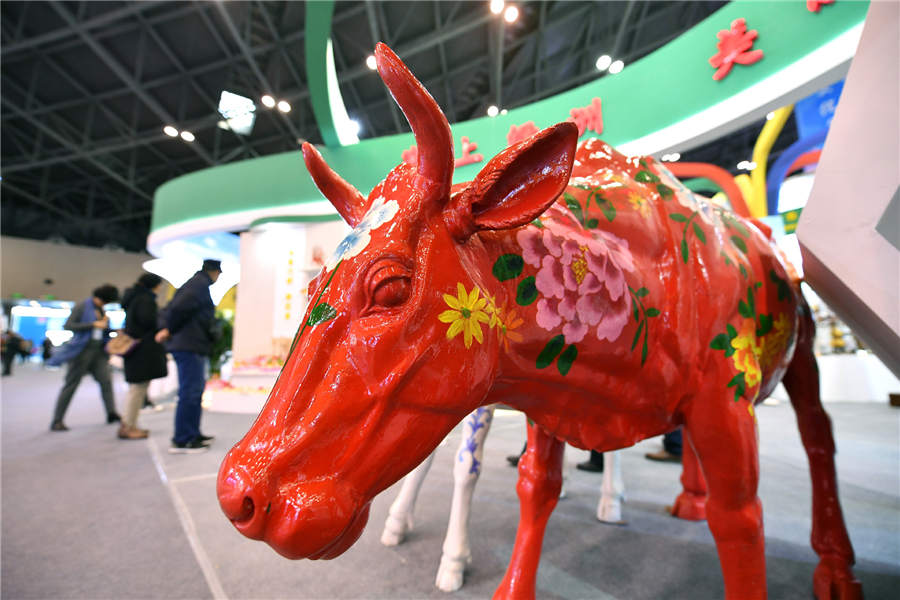
Visitors view exhibits at the Fourth Shanxi Cultural Industries Fair in Taiyuan city, Shanxi province, Dec 5, 2019. [Photo/Xinhua]
The Ministry of Culture and Tourism began to solicit public opinions on a draft law on the promotion of cultural industries on June 28, 2019.
The legislation move aims to boost healthy and sustainable development of cultural sectors and meet intellectual and cultural needs arising from people’s aspirations for a better life, according to a notice by the ministry, which organized the drafting work.
The draft law also stresses the importance of the integration of China’s cultural and tourism industries, which regulates that the country should encourage and support the creation of cultural products based on tourism resources.
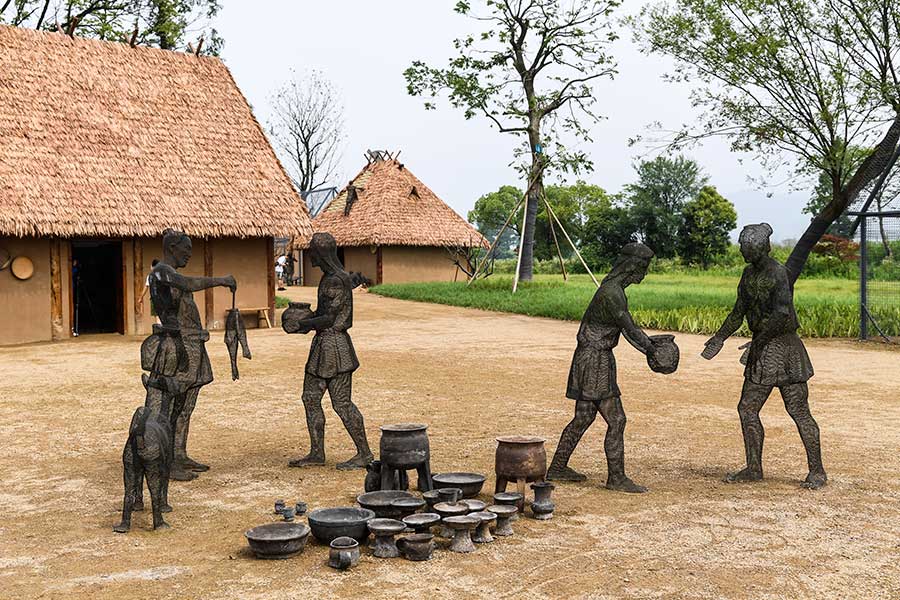
A park in Liangzhu features ruins. [Photo by Wang Chuan/For China Daily]
The Archaeological Ruins of Liangzhu City in Hangzhou, Zhejiang province, which date back 5,300 years, were inscribed onto the UNESCO World Heritage list during the 43rd session of the World Heritage Committee in Baku, Azerbaijan, on July 6, 2019.
The ruins, whose core area covers 14.3 square kilometers in the northwest of Hangzhou, is considered an important representation of early urban civilization, with rice-cultivating agriculture as the economic foundation.
The heritage site includes city ruins with palace and altar remains, 11 early-stage dams, and high-level cemetery sites. The Neolithic civilization was thought to last about 1,000 years until 4,300 years ago, according to archaeologists’ research.
China now has 55 entries to the World Heritage list, the most in the world.
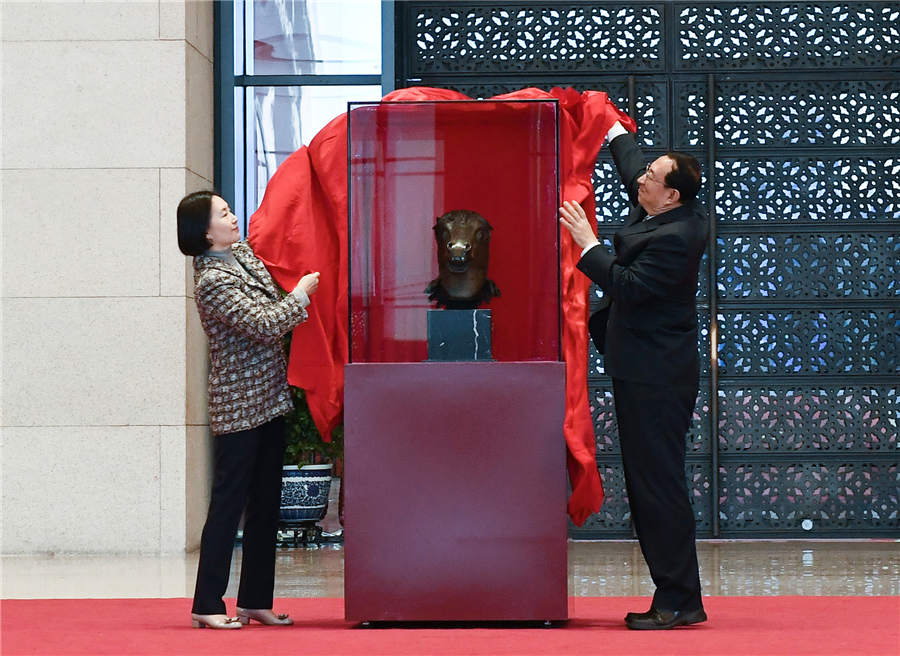
Pansy Ho Chiu-king (left), Stanley Ho’s daughter, and Luo Shugang, Minister of Culture and Tourism, lift the curtain for the newly returned statue at National Museum of China on Nov 13, 2019. [Photo/Xinhua]
A red bronze horse-head statue was donated back by Macao-based tycoon and collector Stanley Ho Hung-sun and handed over to the National Cultural Heritage Administration in Beijing in November this year.
The statue appeared in the National Museum of China and joined a temporary exhibition on cultural relics that have been returned from overseas since 1949.
The newly returned horse-head red bronze statue was one of 12 decorative taps – in the form of 12 Chinese Zodiac Signs – which were set for a foundation in Xiyang Lou area (or Western Mansions), a group of Baroque architecture in the Old Summer Palace.
Ho spent HK$ 69.1 million ($8.8 million) to buy the statue during an auction in September 2007 and decided to donate it back to the mainland on 20th anniversary of Macao’s return to China on Dec 20.

Photo taken on Feb 19, 2019 shows the night scenery at Wumen Gate of the Palace Museum, or the Forbidden City, in Beijing. [Photo/Xinhua]
The Palace Museum, also known as the Forbidden City, has extended its opening hours, allowing the public to celebrate the Lantern Festival at night in the ancient palace for the first time.
The main locations open to the public include the Meridian Gate exhibition hall, the Gate of Supreme Harmony the East Wall and the Gate of Divine Might.
It is the first time the museum is open to the public for free at night in its 94-year history, and the first time the ancient buildings in the Forbidden City are decorated with lights on a large scale at night, the museum said.
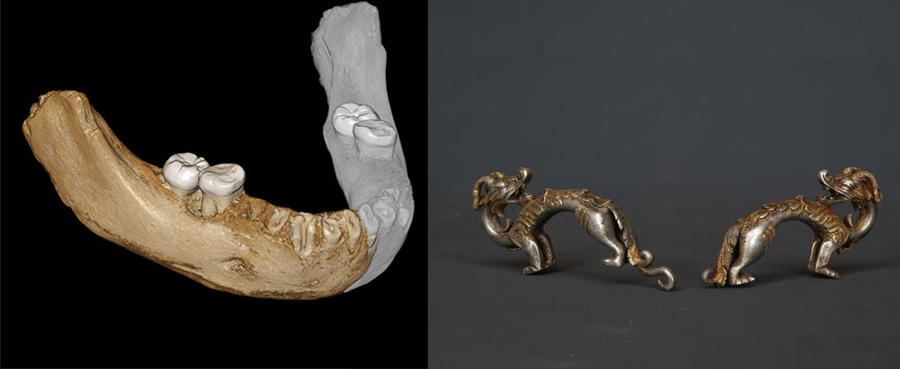
Left: A 3D model of a Denisovan mandible found in Baishiya Karst Cave in Xiahe county, Northwest China’s Gansu province. [Photo/Official WeChat account of Lanzhou Morning Post]; Right: File photo taken on July 5, 2019 shows a pair of gilded silver dragons discovered in a tomb in Arkhangai Province of Mongolia by a China-Mongolia joint archaeological team. [Photo/Xinhua]
Baishiya Karst Cave in Xiahe county, Northwest China’s Gansu province, was recognized by Archeology magazine in the US as one of the top 10 archeological discoveries in 2019.
Some 40 years ago, a Buddhist monk uncovered a mandible (lower jaw) in the cave, which is more than 10,000 feet above sea level on the Tibetan Plateau.
Archeologists have verified that the mandible can be dated back 160,000 years, and analysis of proteins from its teeth indicates that it belonged to a member of the hominin species known as Denisovans.
Besides, a rare pair of silver dragons discovered in Mongolia by local and Chinese scientists has also been added to the list of top 10 archeological discoveries by Archeology magazine.
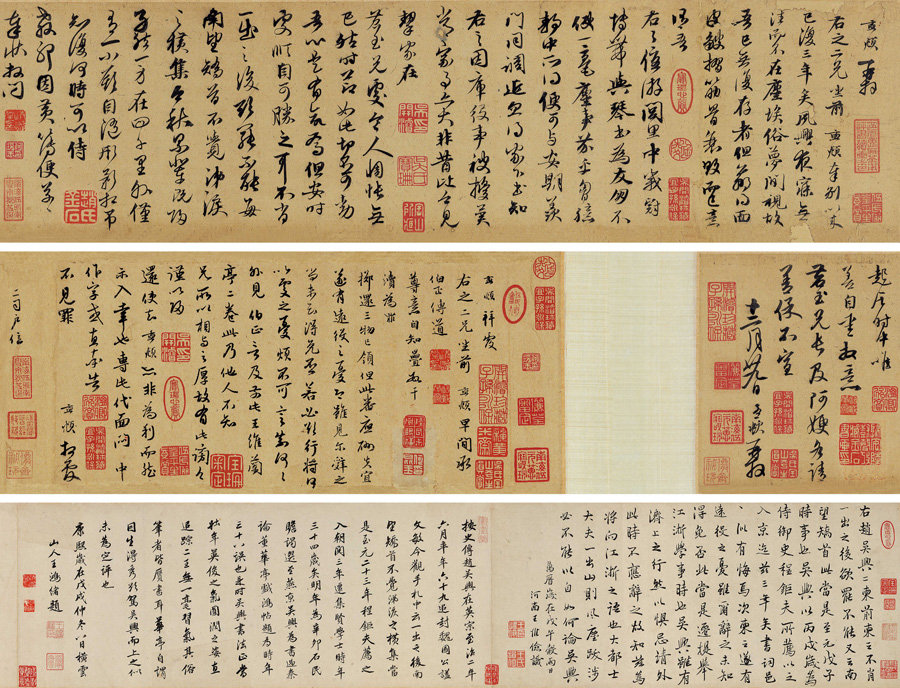
Zhao Mengfu’s Letters. [Photo/cguardian.com]
Yuan Dynasty (1271-1368) painter and calligrapher Zhao Mengfu’s Letters were sold for 267.4 million yuan ($38.2 million) with commission during an autumn auction at China Guardian in Beijing on Nov 19. The price has updated the highest record of the author’s works on sale.
In one of the letters, Zhao Mengfu recounted his ambivalent feelings as he was faced with the dilemma when the high-ranking official sent by Yuan Dynasty emperor came to Hangzhou and invited him to serve the new imperial court as well as the courageous attitude he took when there arising conflicts of interests between friends.
The other letter described the care and sympathy he gave to his friends in economic troubles and the loneliness he felt when he was in the capital city alone.
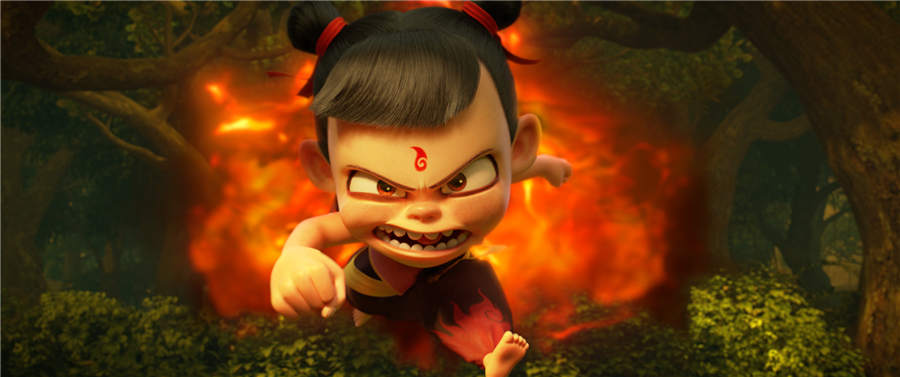
Now foraying into overseas markets, the runaway hit Ne Zha is the top contributor to China’s box-office bonanza this summer. [Photo provided to China Daily]
China’s top-grossing animated film Ne Zha has risen to the second place on the box office chart covering all the films ever screened on the Chinese mainland, behind only Wolf Warrior 2.
Data from the China Movie Data Information Network as of Sept 2 showed that Ne Zha grossed a total box office of around 4.7 billion yuan ($654 million) in the 39 days since its July 26 debut on the Chinese mainland.
The film is loosely based on the tale of Nezha, a mythological figure from the Ming Dynasty (1368-1644) novel Fengshen Yanyi, or “The Investiture of the Gods.”
Directed by 38-year-old Yang Yu, who goes by the nickname Jiaozi, the film depicts Nezha as a mischievous boy with cute and ugly features instead of the attractive young figure that appeared in recent remakes.
The film has been selected as the Chinese mainland’s official Academy Award submission this year, had its first official academy screening.

Fans of Godfrey Gao lay floral bouquets, photos and cards outside the filming location of Chase Me to mourn his death. [Photo provided to China Daily]
Chinese-Canadian actor and model Godfrey Gao died of cardiac arrest after collapsing while filming a TV reality show in Ningbo, East China’s Zhejiang province on Nov 27. The 35-year-old was on the set of Chase Me, a competitive sports reality show on Zhejiang Television.
The death of Gao has not only shocked the world, but exposed the high price of fame. The incident stirred up a massive outcry on China’s social media platforms, with netizens questioning the timeliness and effectiveness of first-aid rescuing services provided when Gao’s deadly heart attack occurred.
The China Television Artists Association’s actors committee has cautioned actors to say no to overtime work after the sad news occurred. The committee also urged TV producers to ensure the safety of actors by giving them adequate rest and reducing the amount of physically intensive work.
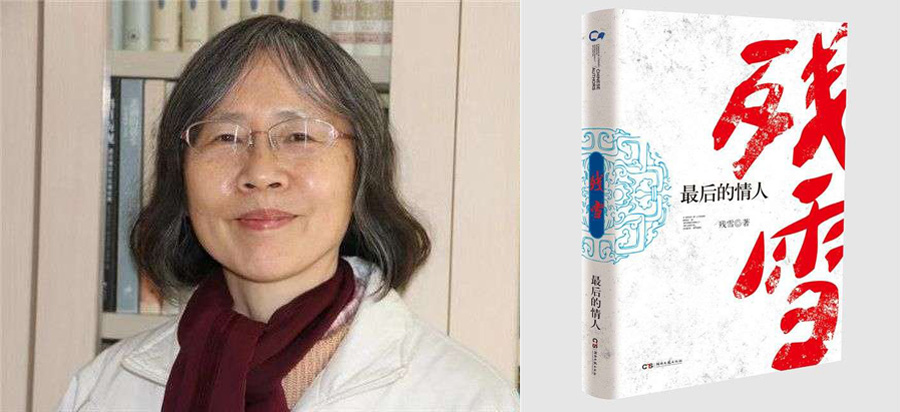
The writer Can Xue and one of Can Xue’s works. [Photo provided to chinadaily.com.cn]
Chinese avant-garde writer Can Xue, penname of Deng Xiaohua, came to public attention because NicerOdds on Oct 6 listed her as the writer fourth-most likely to win Nobel Prize for Literature in 2019 and favorite among Chinese writers. Can Xue and the hit Japanese writer Haruki Murakami are tied for fourth place.
Can was born in Changsha city of Hunan province in 1953. Not raised as a writer, she spent almost 20 years while being a worker, tailor and medical practitioner. Yet she never gave up on her passion, and in 1985 published her first novel Yellow Mud Street.
Her novel The Last Lover has been honored with the Neustadt International Prize for Literature in US, widely considered a prelude award for the Nobel.
Sharing a stylistic similarity with Franz Kafka, Can has been called the “Chinese Kafka” by permanent Nobel Literature Committee judge and renowned sinologist Goran Malmqvist. Malmqvist even believed Can could achieve more than Kafka, as she has already created more than 7 million words of literary composition.

The Black Cat Detective cartoon series, which ran from 1984 to 1987, was the brainchild of animator Dai Tielang. [Photo provided to China Daily]
Dai Tielang, director and scriptwriter of hit cartoon series Black Cat Detective, died of illness at 89 on September 4.
Born in Singapore in 1930, Dai moved to China when he was 10. After graduating from the Beijing Film Academy in 1953, he began working with Shanghai Animation Film Studio, where he helped produce more than 30 works.
Black Cat Detective features a feline sleuth tackling a tough case and bringing peace to the animals in a forest. Based on the eponymous comic series by children’s book author Zhu Zhixian, which was released in 1982, Black Cat Detective is among China’s best-loved cartoon series, with five seasons screened from 1984 to 1987. It was one of the country’s first home-produced cartoon series, with each episode running for about 20 minutes.
Beijing News quoted television host Ju Ping, narrator of the movie version of Black Cat Detective directed by Dai Tielang, as saying: “When I was a child, I watched the cartoon series. When I grew up, I was lucky enough to be part of the classic cartoon story. Though I never met Dai in person, it seems as if I know him very well, because I am a big fan of all of his works.”